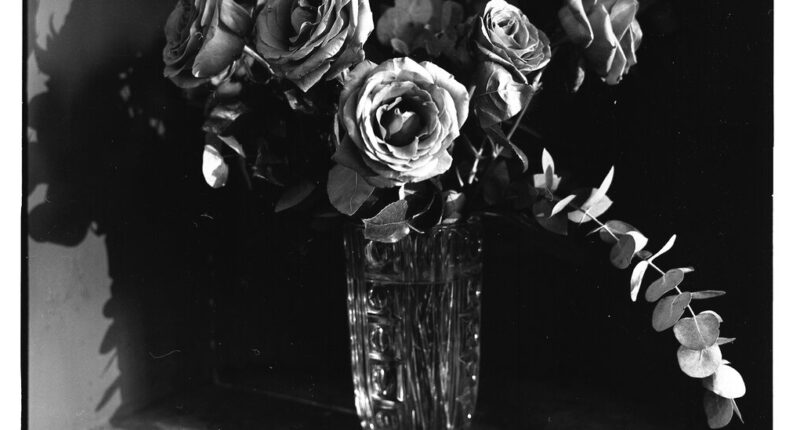
Marc Hamer was “the gardener,” someone who — for a portion of each day, over a career’s worth of years — knelt for hire, often pulling weeds.
He knew that his employers in the big house, wine glasses in hand, would look out and see him in his posture of humility and perhaps say, “The gardener is here,” as if he were nameless and this was his only purpose on earth. But no matter.
“If just felt silly to concern myself with the social thing, because I was out there in this beautiful relationship with these other living things that were just like me,” the English-born Mr. Hamer said the other day, speaking from his longtime home in Cardiff, Wales. “It felt like prayer; it felt like I was actually humbling myself, bowing to the universe.”
A garden is a place of work, yes. But for anyone with the soul of a gardener — no matter their level of expertise — it is also something else.
“A garden is always a place of worship, even if it is a really crappy one,” Mr. Hamer, 66, writes in his latest book, “Spring Rain: A Life Lived in Gardens,” his third in barely four years. No surprise that every monastery has a garden, he points out.
The book is the last volume of a memoir trilogy that started with the 2019 publication of the indie hit “How to Catch a Mole: Wisdom From a Life Lived in Nature.” (Mr. Hamer has also worked as a freelance mole-catcher-for-hire.)
About three years ago, when those knees had had enough, he retired from it all.
“I used to like kneeling in the garden — it felt like bowing to the world that made me,” he writes in “Spring Rain.” As a gardener, he told me, you “are very much aware that your existence is for a very short period of time, and that you are just like the plants are, rising and blooming, and then fading.”
‘I Am Gardening Me’
Such moments of communion with forces bigger than himself continue, but now in other forms: yoga, meditation, long walks. Or just sitting in his chair, feet on the window ledge, staring out for an extended period and watching the blossoms floating off the branches.
“I am still gardening, but I am gardening me,” said Mr. Hamer, whose meditation cushion and yoga mat are often positioned to view the small plot he is remaking around the Cardiff home where he and his wife, Kate Hamer, a fiction writer, have lived for three decades. Yes, he still has at least a part-time dirt-based practice; he described himself on Instagram recently as “barefoot and grubby.”
“I need to make this broken garden whole again,” he writes, “as it’s not a useful space anymore, it is something left over — a museum, a mausoleum that needs to change so that I can change too.”
This is a new chapter in his time on earth, and a new chapter for a piece of ground that has been many things. It was a yard for his children to play in, a storage place for his work gear. It has long been the repository of bits of plants someone didn’t want or need that he carried home from jobs, including a lavender bush that has defiantly achieved massive proportions and thrived for 15 years, despite the shady conditions he knows it should hate.
But mostly, he acknowledges, the space has been an afterthought, never receiving the nurturing he gave to the landscape that belonged to Miss Cashmere, the name he assigns his former employer in his books.
“Working as a gardener,” he observed, “you don’t go home and then do your garden. You’re too tired. You go home and fall asleep in the chair.”
Always a Gardener (If No Longer a Flower)
You can take the gardener out of the garden, but …
“Gardening is in my muscle memory and occasionally, when I’m out walking,” Mr. Hamer writes, “I see a stem that needs pruning and absent-mindedly reach for the secateurs that for years hung in a leather holster on my belt every day.”
When, in some everyday exchange, he hears himself say, “I used to be a gardener,” it startles him to realize that he has instinctively invoked the past tense.
“My body can’t do that kind of work anymore,” he writes, “but my mind is all garden: constant bloom and seed and bloom.”
These days, he said, “I’m looking at the dried-out poppy seed heads and seeing me. So you get that whole memento mori, really, don’t you? And that’s a very important aspect, I think, of a meditative or contemplative lifestyle.”
The Zen of Digging Dahlia Tubers
“Spring Rain” has two main characters — and yet just one. Half of the essays are in the first person, the ruminations of the present-day Marc Hamer, gardener in transition.
Once, however, he was “the boy,” and that earlier aspect of himself appears in the other passages, depicted in the third person.
The boy is the child of a father he calls Angry Dog, and a distracted mother. At 16, he leaves home for good and lives rough for a time, “sleeping at the edge of the fields like a hedgehog, by rivers like a water sprite, in woodlands like a fox,” Mr. Hamer writes.
The boy had always been inquisitive. “Children are designed to work out how the world works in order to survive,” he writes. His young self lies on his stomach outdoors, watching the workings of ants, and then looks them up in an old encyclopedia set he has discovered in the shed outside a rented house the family lived in.
“When I was a child, I’d open seeds up with my pen knife and see what was inside, and how they could work — or pine cones,” Mr. Hamer recalled. “Of course, you look into something to find what is in it that makes it work, and there isn’t anything in there that makes it work. Because it’s all the things together that make it work — it’s impossibly complicated.”
Seeking understanding, we cut it “into smaller and smaller and smaller segments,” he continued. “And at that point, you actually destroy the entirety of what it is.”
A gardener, and a meditator, were germinating within him, inseparable and indelible aspects of the man he would become.
“You cannot be a gardener without mindfulness,” he said. “Gardening, meditation: It’s all pretty much the same really isn’t it?”
Digging up dahlias requires attention, he reminds us, or you’ll pierce the tubers.
“It’s not dreamy at all, really,” he said. “It’s focused attention, a kind of single-pointed meditation, really, an exercise in mindfulness in a very simple kind of way. This is the definition of mindfulness, and it’s a gateway to a deeper meditation.”
May I Have This Dance?
In the living classroom — or house of worship? — that is the garden, all of the life lessons are enacted before us. As we rake or weed, each action is its own form of moving meditation.
Over and again, as things don’t go as planned, we are challenged to adopt an attitude of nonattachment and to hear the message of impermanence: Nothing lasts.
We strive to be here now (with a nod to Ram Dass, who died in 2019). On that carpe diem theme, Mr. Hamer writes: “All the flowers’ melancholic fading signals the brevity of life and shouts to me, ‘Blossom while you can, you fool!’ A mass of complex feelings, yet these blooms know nothing of joy or funerals or lovers’ dresses, they are merely coagulated genes like us, evolved to survive and pass themselves on.”
This is a rich and tender time.
“As I amble around the village where I was a gardener for so many years I see the flowers I planted in the little front gardens of people who’ve since died, moved house or just grown old, and I feel that I have added love,” he writes.
But he also feels a sense of freedom. He recently handed down his lawn mowers. (Although he recalled thinking, “They are his now, he is the gardener now; I wonder who I am,” as he lifted them into the man’s truck.) The old mole van is being replaced with a camper van, better for trips to France to see his grandchild.
“As a younger person, there always seems an urgency, a rush to get on and do the next thing, because you have this ladder to climb, or this journey to do,” he said. “I know what the journey is now; I’ve done all that. And I know what the journey is for me ahead. And because I’ve done all those other things, to me, that feels very liberating. And I’m not afraid.”
If anything, there is a lightening.
“I feel like I can go back and pull out all the things that I’ve enjoyed in my life, and look at them again,” he said. “I dance with my wife.”
He added: “When I was young, when I was working hard, I was too tired to dance. I never danced. I was exhausted. Now, I dance.”
Margaret Roach is the creator of the website and podcast A Way to Garden, and a book of the same name.
For weekly email updates on residential real estate news, sign up here.
Source: | This article originally belongs to Nytimes.com









